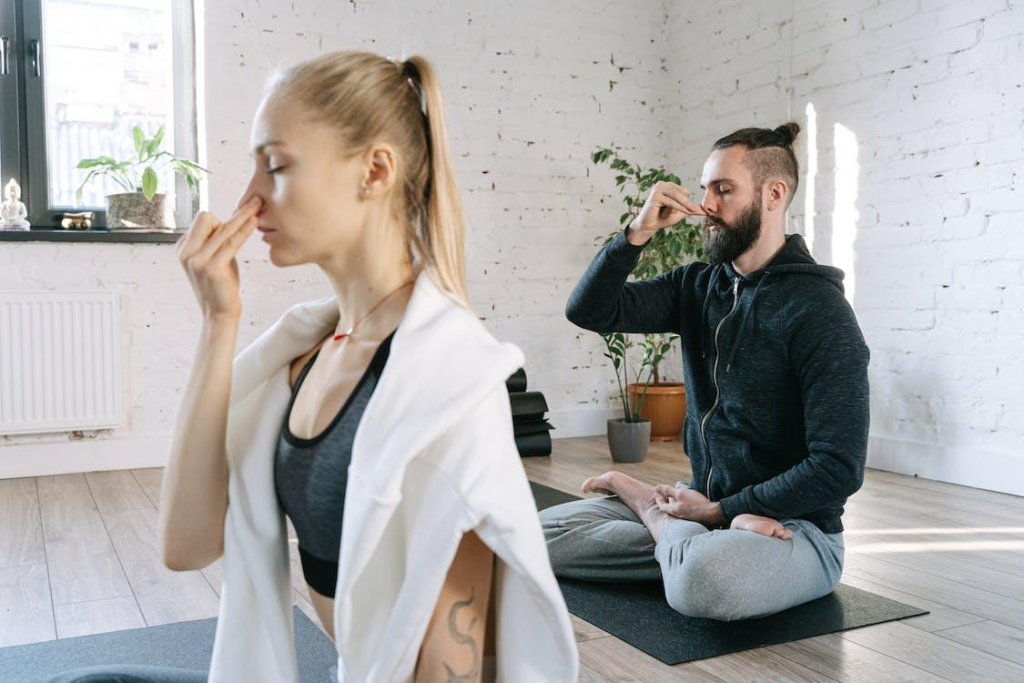In the current era, we have been witnessing increasingly stressful lives and anxiety disorders among several people. However, meditation and pranayama have exhibited impeccable results. The more you concentrate, the better you meditate, and pranayama comes by itself!
Are you also looking to know the benefits of meditation and pranayama into your daily routine? Or you might want to take a break and feel like even any small task will make your bucket overflow! Whatever the concern is, the answer/solution is Yoga- Pranayama & Meditation!
Yoga is a form of mind-body practice that is not a requisite for adults but also for kids. Thus, people of all ages can follow Yoga practices and add them to their routines.
What exactly is ‘Pranayama’?

Before knowing about pranayama, it is vital to enlighten you on what is ‘Prana’. It is a vital energy requisite for our physical and subtle layers, without which our body will decay. Fundamentally, prana is the source through which our body and mind are replenished. In simple words, prana refers to breathing.
Pranayama is yogic breathing that refers to the universal life force creating a robust aura around the body. In Pranayama, ‘Ayama’ means to control. So, pranayama means having excellent control over your breath.
You can also take yoga classes for pranayama that will make you experience spiritual wonders. To ensure the safety of people with any particular medical issue, instructors always advise yogis to consult their doctors before they practice any complex exercise. So, always confer with your doctor if you undergo any medical treatments.
Is Pranayama Worthwhile?
Indeed, it is. Pranayama is favorable for your spirit, mind and entire body.
Besides, pranayama has several benefits for your overall health. Let’s look at all those benefits:
- Extend the exhale.
- Brings harmony and attention between the body, mind and soul.
- Relieve yourself from stress.
- Improves blood circulation and concentration.
- Triangle breathing.
- Improves sleep quality and mindfulness.
- Enhances cognitive performance.
- Reduces high blood pressure.
- Brings energy, enthusiasm, and positivity.
- Elevates and rejuvenates the spirit.
- Regular pranayama practice will also mitigate the possibility of many diseases, such as asthma, migraine, gastric issues, etc.
What is Meditation? Why is it a Subjective Experience?

Meditation is a complementary mind-body medicine that involves focus, awareness, and relaxation. It is more about training in awareness and getting a healthy perspective.
However, there is no specific definition of meditation as it entirely depends from person to person. For some people, meditation means being away from the world, being by themselves, and contemplating distinctive aspects of life. For someone, it may be a prayer, or it could be traveling to natural scenic places.
Thus, it is a subjective experience that can differ based on the individual’s thought process.
How Can Mediation Be Beneficial?
Meditation helps you in many ways, such as:
- Brings clarity of thoughts aiding in better decision-making.
- Alleviate the feeling of loneliness and depression.
- Calms the mind and improves overall health.
- Driving negative thoughts away.
- Improves digestion and blood circulation.
Yoga vs Pranayama vs Meditation
Yoga, Pranayama, and Meditation have become buzzwords for body fitness. Sometimes, people mix these 3 terms and do not know the difference between them.
Yoga is the union of body, mind, and spirit. It promotes the harmonious collaboration of individuals through the 8 limbs of Yoga, including:
- Yama
- Niyama
- Asana
- Pranayama
- Pratyahara
- Dharana
- Dhyana
- Samadhi
Yoga is loosely connected with physical practices like poses or asanas. Simultaneously, meditation and pranayama are intrinsic parts of any complete yoga practice. As stated above, pranayama is yogic breathing practice; on the contrary, meditation is the mental practice of reaching a higher state of consciousness. Both are part of Yoga but are separate practices; related to each other.
Yoga for Kids!

Being a kid of today’s age is not a cakewalk. We often assume that childhood is a “carefree” period. But not anymore!
We live in a world where they’d have to deal with peer pressure, the dire need to meet parents’ expectations, achieve higher scores in competitive exams, and perform well in extra-curricular activities, hobbies, and whatnot. This bustling pace of their lives mysteriously affects their innate joy. Kids do not know what stress is, nor do they know how to cope with it.
Yoga is an ancient practice that unites body and mind. It develops the awareness of physical, mental, and spiritual energies. Incorporating the kids Yoga classes into their schedule could build concentration, improve memory, and develop cognitive functioning.
Yoga provides ample asanas or poses for addressing various health benefits and has become mainstream for adults & now for kids too! Sounds a little unusual? Let’s find out why it’s not and why your child should learn Yoga.
Why Kids Yoga Classes are Essential?
Every parent knows that the competition is increasing for kids in every field, be it academics, sports, or any other activity. Due to this, the children face severe anxiety and stress, and if the situation worsens, they become victims of depression.
There are a lot of poses in Yoga that help reduce stress by relaxing your child’s mind. Moreover, it gives them time and patience to mellow down and analyzes things around them.
There are a lot of benefits of kids’ yoga classes; some of them are listed below-
1) Yoga teaches self-acceptance
2) Strengthen child’s growing bodies, and improve their flexibility.
3) It encourages healthy eating habits.
4) It teaches kids to improve concentration and focus.
5) Yoga teaches kids about breathing techniques and trains their brains to reduce impulsivity.
6) It helps them build a positive image of their body.
These are some of the significant benefits of Yoga for young kids, so if you want your kid to benefit from Yoga and don’t want them to face any mental issues, make sure they start practicing Yoga.
You might be amazed to hear that kids are natural yogis, and if we lead them today, they will benefit immensely!
Did You Assess The Yoga Class?
Search for a Yoga institute cautiously, as they will be your role model and source of inspiration for years to come. So, before enrolling in a Yoga training center, ensure they have a professional Yoga teacher, the number of Yogis who graduated from the institute, the Yoga styles they teach, and the teacher’s skills to calm down Yogis in the classroom!




1 Comment